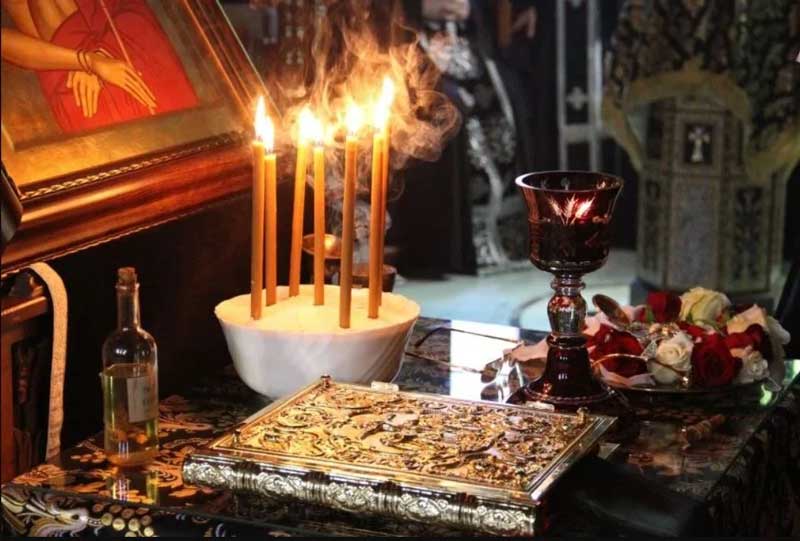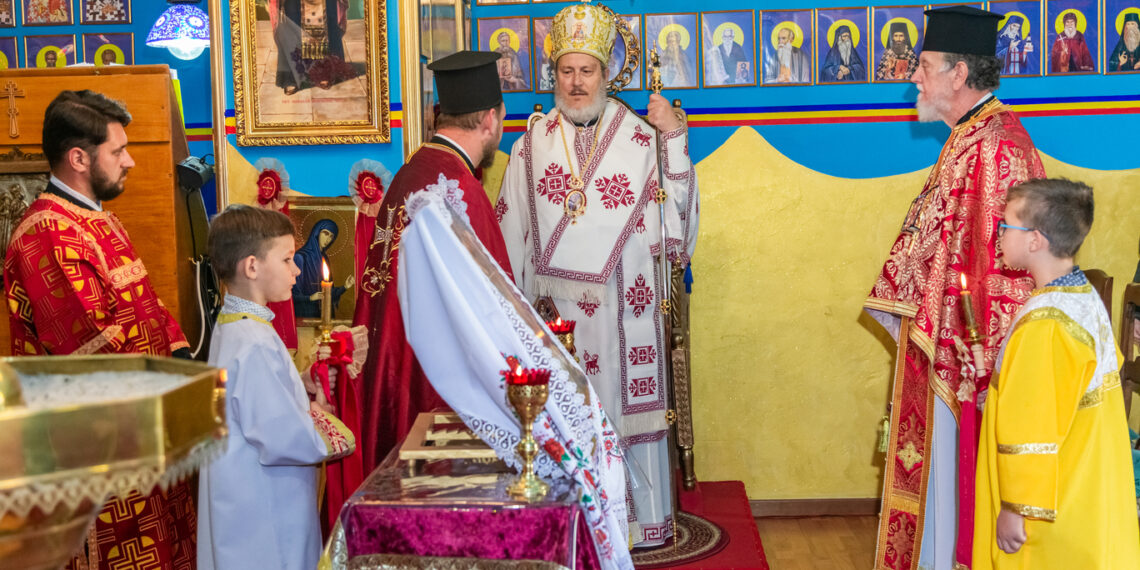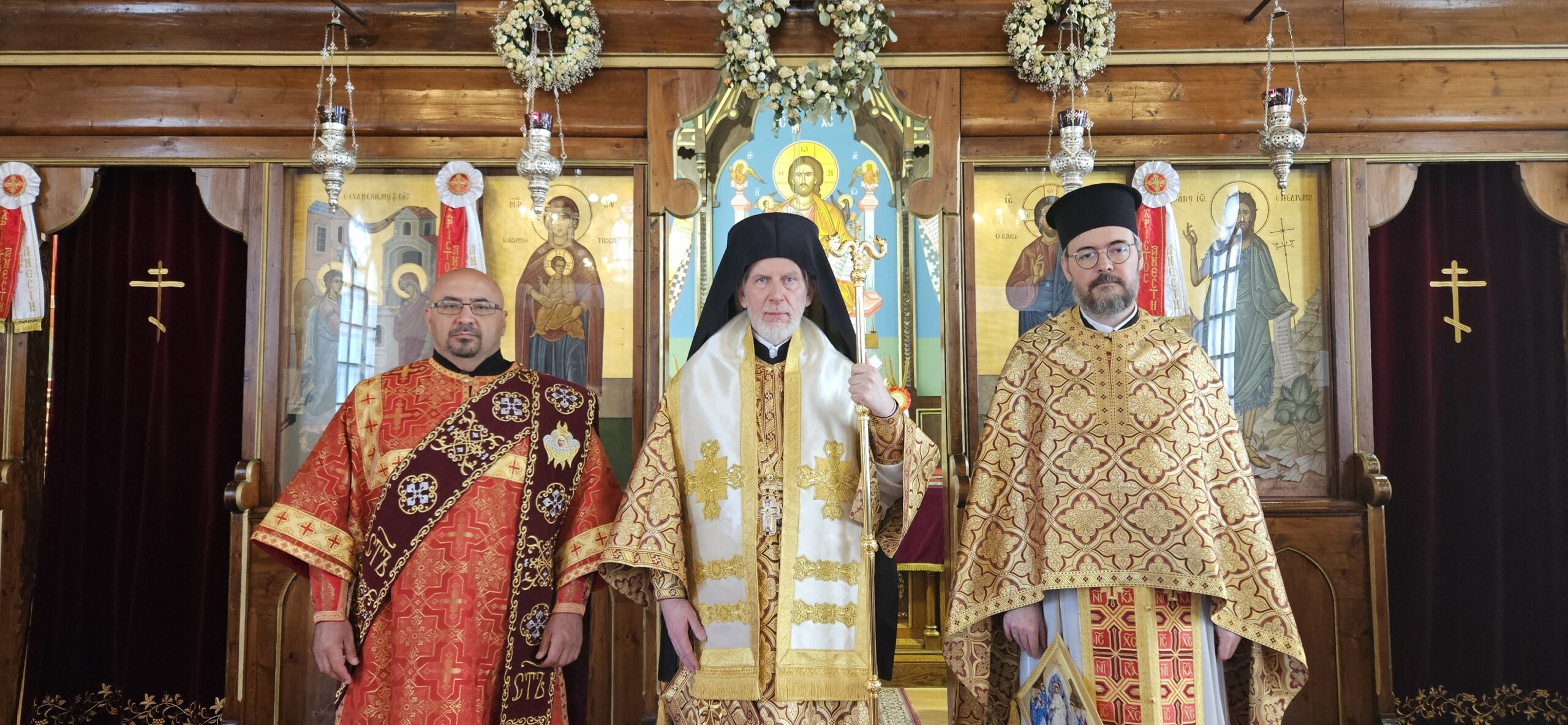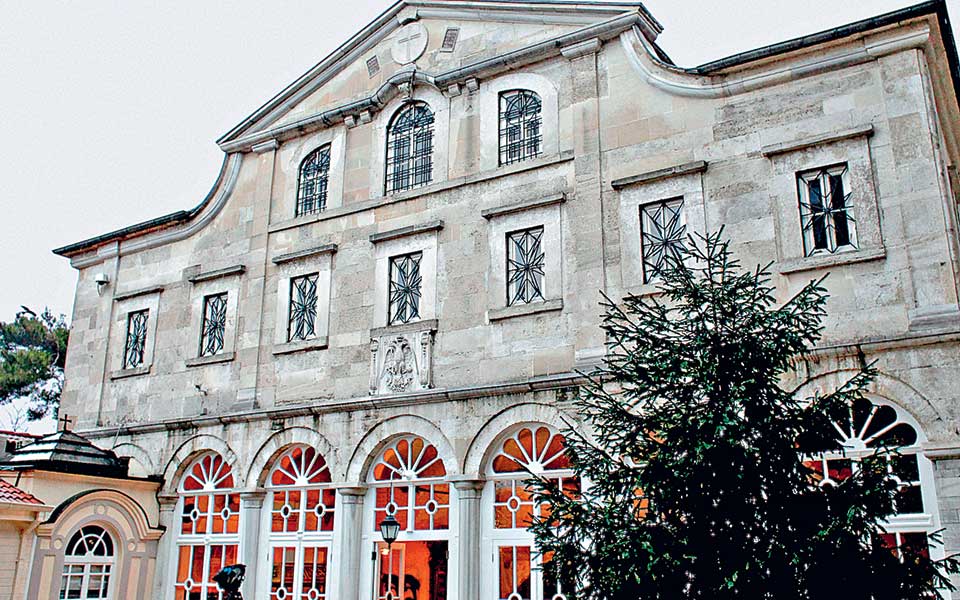The Sacrament of Holy Unction and Holy Wednesday


“Is anyone among you sick? Let them call the presbyters of the church to pray over them and anoint them with oil in the name of the Lord. And the prayer offered in faith will make the sick person well and the Lord will raise them up. If they have sinned, they will be forgiven.” (James 5:14-15)
In the evening of Holy Wednesday there is celebrated in our churches the Mystery of Great Unction (or Anointing). During the celebration there are seven readings from the Gospels, seven from the Epistles and seven Prayers, and ideally seven Priests (if possible). In this way the oil of Great Unction is blessed, and the Priest in turn blesses the faithful by anointing them with oil crosswise on the forehead, the chin, the cheeks, the palms and the hands.
This ceremony is not only done on Holy Wednesday, but it can be done any time of the year, and the faithful can even ask their parish priest to have the Mystery of Unction performed in their homes.
The reason we celebrate the Mystery of Great Unction on Holy Wednesday is because the Orthodox Church sets aside this day as a day of final preparation before we witness the Passion of Christ. Just as Christ was anointed with precious and expensive myrrh by the repentant harlot woman in preparation for His burial, so are we also anointed with sanctified oil towards our healing and the forgiveness of sins. This is because no one can approach the Passion of the Lord properly without being healed of their own sinful passions. The sanctified oil of anointing is therapeutic for the soul and the body, and not only is to be accompanied with Confession for any mortal sins committed, but it helps prepare us to receive the Immaculate Body and Precious Blood of the Lord the next morning on Holy and Great Thursday.
Greek Traditions and Holy Unction
During the ceremony of the Mystery of Great Unction a candle is lit for each of the seven Gospel readings. Some of the faithful do this as well during the ceremony. At the same time, three candles remain lit throughout the ceremony in a bowl of flour (some place the seven candles here). It is customary to take this flour afterwards and use it to bake traditional paschal cookies, to be eaten when the fasting period is completed on Pascha, though it can also be used for the offering bread of the Eucharist.
In Pontus it was common for the Priest to celebrate the Mystery of Great Unction in the homes of the faithful. Not only was the household anointed, but also objects that were used as sacred items and set apart for sacred work.
In Kotyora (Ordou), the Priest on Holy Wednesday would visit the homes of the faithful, in which there were raw eggs, flour and salt. The Priest would anoint these and on Holy Thursday they would dye their eggs and bring all three items to church for Vespers in a basket covered with cloth.
In Sparta they would eat some of this flour every morning as unleavened bread. Then they would prepare the new flour for the year on Holy Wednesday, since flour needs to be refreshed yearly.
In Athens, a woman from the church would go from house to house and knead the flour without yeast. The Priest would then lean a Cross on it in the church and the dough would rise. This was the unleavened bread for the year. The woman would then distribute this dough to the houses, and from this the paschal cookies would be made.
Holy Anointing, or Unction, is one the Seven Mysteries of the Church mentioned in Holy Scripture, which is celebrated in a church or in the home to cure illnesses of the body and the soul. The Unction of Holy Wednesday does not have a magical effect on our spiritual life, but it is part of an unbreakable chain together with the other Mysteries in which we must participate, namely Confession and Holy Communion.
The Origins of the Mystery
The origins of Anointing, as that of the other Mysteries, is found in the New Testament, specifically the Catholic Epistle of Saint James (5:14-15): “Is anyone among you sick? Let him call for the presbyters of the church, and let them pray over him, anointing him with oil in the name of the Lord. And the prayer of faith will save the sick, and the Lord will raise him up. And if he has committed sins, he will be forgiven.”
Thus, the apostolic order is the basis on which is founded the faith and ritual acts of the Church. Those who perform this philanthropic Mystery are the presbyters of the Church, who are invited to the home of a sick Christian for this purpose. Near the patient they pray fervently. They invoke the grace of the All-Holy Spirit to bless the oil which is distributed. Then the sick Christian is anointed with the blessed oil. The anointing with the blessed oil saves the sick.
The Celebration of the Mystery
The Service of Anointing is performed for “the healing of soul and body”. According to the teaching of the Church, physical illness is regarded as a bitter fruit of sin. Any sickness as a disorder of the harmonious functioning of the body is due to spiritual causes, mainly a disruption of man’s relationship with God. In the sacred texts there is not only a close association of the sickness with sin, but at the same time it indicates a way of therapy: sincere repentance and return to God.
The Visible Elements of Anointing
For the celebration of the Mystery there is placed on a table a Holy Gospel, a small icon of Christ, a lit oil lamp contained with flour, beside which are seven lit candles. The oil lamp should be clean and inside should be pure olive oil, to indicate a pure and sincere offering to God. This is why the Good Samaritan in the homonymous parable, is lovingly nursed of his injurious wounds with olive oil and wine. The oil, after the prayers of the priest, is no longer common oil. The same with baptism: the baptismal water, after the prayers of the liturgist, is no longer common water.
At the end of the service is the anointing with the holy oil. We are anointed crosswise on the forehead, chin, both cheeks, and in the inside and outside of each hand. With this anointing, the priest asks the Lord for the healing of spirit, thought and our entire inner world. Furthermore, that it give strength to the members of the body with which we make the most use (ex. the hands are the means by which we execute the commands of our minds).
Misunderstandings of the Mystery
1. First of all, some consider that the forgiveness prayer of the Anointing substitutes for Confession, which may not have been done for various reasons. The forgiveness prayer of Anointing does not abolish the need for the forgiveness prayer of Confession. The forgiveness of sins that comes from the Mystery of Anointing does not mention the sins we know of and do not confess, but those which are forgotten or unknown. No Mystery of the Church contradicts or abolishes another, but they compliment one another in the great “Mystery” of the Church.
2. Another misunderstanding occurs with the flour, which is used to support the candles. Some of the faithful are not satisfied with the anointing of the holy oil, but they ask for the flour to be used in various cases: to put it under the pillow of their child “that God may show them their luck”, or that “evil may depart from the house”, or to dilute it with water and have the patient drink it. Because these things touch upon superstition, we must emphasize that the Mystery is called Anointing and not “Flouring”. That which is sanctified is the oil and not the flour.
3. There is another misunderstanding, which confuses the purpose of Anointing. Many ask for Unction to inaugurate their new home or business. There are other sanctifying acts that are to be done for homes, businesses, vehicles and other things. Still there are other people who ask the priest to perform a Sanctification of the Waters ceremony with Holy Unction, showing confusion and misunderstanding. It’s as if you need more than one sanctifying act to request the grace of God.
4. Another misunderstanding is the perception that Unction is associated with the dying and those who are generally in the final stages of their sickness. It is thus avoided out of fear that it may accelerate the death of a patient. This fear, however, is unwarranted. The relatives are afraid to tell the patient. The patient is afraid to ask. Holy Unction is for health and life. All the prayers and supplications of the Mystery are for health and life.
Finally, it is necessary to address a complaint: Why is there not always a cure? The Mystery of Anointing was not established to eliminate all illness, death and the need for medical science. Many times it brings an indirect treatment. Furthermore, treatment depends on the faith of a person and the will of God. Though the same grace is given to all, not all are healed. Treatment may not be in the greatest interest for a person. It is primarily to help guide the sick to lead them confidently to Christ’s salvation: in this way would be achieved the ultimate goal of the Mystery.
Required Materials
For Holy Unction, the following materials are needed:
a) one oil lamp with olive oil (and a little red wine)
b) a censer and incense
c) an icon of Christ or the Panagia or of a Saint
d) a bowl with flour, that afterwards can be prepared for prosphoron
e) seven candles for each of the Gospels that are read during the service
f) the names “for the health of a loved one” for whom the Mystery is being performed
g) a cotton swab for wiping the holy anointing
The holy oil is not to be discarded but kept! It should burn in the oil lamp until it is completely extinguished. After it is completely extinguished, everything used to clean the lamp and its content are to be burned in a fire in a safe place.
Source: Translated by John Sanidopoulos.




